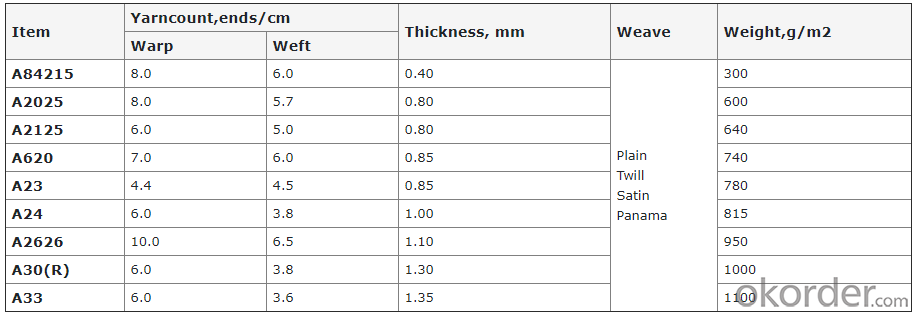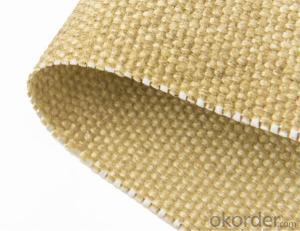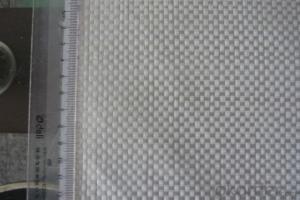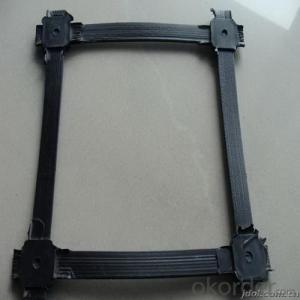Fireproof Fiberglass Cloth Coated With Vermiculite
- Loading Port:
- Ningbo
- Payment Terms:
- TT OR LC
- Min Order Qty:
- 500 m²
- Supply Capability:
- 300000 m²/month
OKorder Service Pledge
OKorder Financial Service
You Might Also Like
Description: Vermiculite coated fiberglass fabrics is mainly composed of alkali-free glass fiber and vermiculite, in which glass fiber is the substrate and vermiculite is the coating material. Vermiculite is a natural mineral. The vermiculite coating makes the composite glass fiber cloth resistant to high temperature in a short time to 1000℃ and continuous temperature resistance to 800℃.In the production process, the vermiculite is uniformly coated on the fiberglass products, and then dried in the subsequent process, the vermiculite settles on the fiberglass products, so as to produce coated vermiculite glass of different thicknesses and specifications Fiber products. At the same time, the glass fiber cloth has stronger fire breakdown resistance and friction resistance, and good mechanical processing performance.
Features: High Temperatures And Abrasion Resistant, Heat Protection
Application: high temperature gloves, high-temperature gaskets, and other high-temperature personal protective equipment, insulation blankets, welding blankets, welding pads, thermal protection, high temperature lagging, high temperature sealing, fire curtains, thermal insulation curtain, expansion joints

PRICE: USD7 per square meter
UNIT: square meter
MOQ: 500 square meters
Weight: 600gsm-3000gsm or customized
Width: 0.9m-2m or customized
Yarn Type: E-glass
Standing temperature: 850℃-1000℃
Product name: Vermiculite coated fiberglass fabric
Coating/Finish/Surface Treatment: Vermiculite coated
Roll length: 50 meter or customized
Color: Yellow
Weave Type: plain woven
Alkali content: Alkali free
Processing service: cutting
Material: fiberglass fabric, Vermiculite
Thickness: 0.6mm to 3mm
Size: can be customized
Supply ability: 300000 meters per month
Packaging: Vermiculite coated fiberglass fabrics rolls covered with film packed in cartons loaded on pallets or according to customers' requirements.
Lead time: 7-30 days
- Q:Can fiberglass fabric be used for making electronic devices?
- Fiberglass fabric is capable of being utilized in the production of electronic devices. Its remarkable thermal and electrical insulation properties have rendered it a widely employed material within the electronics industry. It is frequently employed as a substrate for printed circuit boards (PCBs) and serves as an insulating layer for various electronic components. The fabric's strength and dimensional stability make it ideal for constructing robust PCBs that are capable of enduring the heat generated by electronic components. Furthermore, fiberglass fabric is also suitable for the production of flexible PCBs, which are commonly found in wearable devices and other portable electronics. All in all, fiberglass fabric is an adaptable material that finds extensive use in the manufacture of electronic devices.
- Q:Is fiberglass fabric resistant to UV discoloration?
- Yes, fiberglass fabric is resistant to UV discoloration. Fiberglass is known for its excellent UV resistance, making it a suitable choice for applications that are exposed to the sun for prolonged periods. The fabric is specifically designed to withstand the damaging effects of ultraviolet radiation, which can cause discoloration and degradation over time. By using fiberglass fabric, you can ensure that your materials will maintain their original color and appearance even when exposed to sunlight for extended periods.
- Q:What are the advantages of using fiberglass fabric in construction?
- Fiberglass fabric offers numerous benefits for construction purposes. Firstly, it boasts exceptional strength and durability, with a high tensile strength that enables it to withstand substantial forces without breaking or tearing. This makes it ideal for reinforcing structures and providing added strength to various construction elements. Secondly, fiberglass fabric is lightweight in comparison to materials like steel or concrete. This lightness makes it easier to handle and transport, resulting in increased efficiency and reduced labor costs during the construction process. Moreover, fiberglass fabric exhibits impressive resistance to corrosion. Unlike metals, which are prone to rust over time, fiberglass fabric remains unaffected, making it a long-lasting and low-maintenance option for construction projects. Its resistance to corrosion also enables its use in various environments, including those with high moisture or chemical levels. Additionally, fiberglass fabric is a non-conductive material, making it perfect for applications where electrical insulation is necessary, such as electrical panels or wiring systems. It provides a safe and reliable solution for preventing electrical currents from passing through and causing potential hazards. Another advantage of using fiberglass fabric in construction lies in its versatility. It can be molded and shaped into various forms, allowing for customization and flexibility in design. This versatility empowers architects and builders to create unique structures and achieve specific aesthetic goals. Lastly, fiberglass fabric is fire-resistant. It possesses a high melting point and does not support combustion, making it a safer option in terms of fire protection. By incorporating fiberglass fabric into construction projects, the risk of fire spreading and causing extensive damage can be significantly reduced. In conclusion, the benefits of using fiberglass fabric in construction include its strength, lightweight nature, corrosion resistance, electrical insulation properties, versatility, and fire-resistant qualities. These advantages make it a reliable and efficient material choice for a wide range of construction applications.
- Q:What are some popular brands of fiberglass fabric?
- Some popular brands of fiberglass fabric include Owens Corning, Saint-Gobain, and Hexcel.
- Q:How is fiberglass fabric coated?
- Fiberglass fabric is typically coated using various techniques such as dip coating, roll coating, or spray coating. These methods involve applying a layer of resin or polymer onto the surface of the fabric to enhance its properties, such as improving its strength, flexibility, and resistance to chemicals or fire. The coated fabric is then dried or cured to ensure the coating adheres properly, resulting in a durable and versatile material.
- Q:How does fiberglass fabric perform in fire-resistant applications?
- Fiberglass fabric is highly effective in fire-resistant applications. It has a high melting point and does not contribute to the spread of flames. In case of fire, it helps to contain the fire and prevent its spread, providing a valuable protective barrier. Additionally, fiberglass fabric is known for its excellent thermal insulation properties, which further enhances its performance in fire-resistant applications.
- Q:Are there any specific safety precautions to consider when working with fiberglass fabrics?
- There are multiple safety precautions to take into account when working with fiberglass fabrics. To begin with, it is crucial to utilize suitable personal protective equipment (PPE) such as gloves, goggles, and a respirator. Minimizing direct contact and inhalation of the fiberglass fibers is essential due to their potential to irritate the skin, eyes, and respiratory system. In addition, it is advisable to either work in a well-ventilated area or employ local exhaust ventilation to decrease the concentration of airborne fiberglass particles. This measure helps in preventing respiratory issues caused by inhaling the fibers. Furthermore, it is important to handle fiberglass fabrics with caution to avoid generating dust or releasing loose fibers. Cutting or sanding fiberglass fabrics should be carried out in a controlled manner by using wet techniques or dust collection systems to reduce airborne particles. When it comes to cleaning up after working with fiberglass fabrics, it is recommended to use a damp cloth or a vacuum cleaner equipped with a HEPA filter to capture any loose fibers. Avoid dry sweeping or using compressed air as these methods can disperse the fibers into the air. Lastly, it is worth noting that storing fiberglass fabrics in a dry area is crucial to prevent moisture absorption, which can negatively impact their performance and durability. By adhering to these safety precautions, individuals can effectively minimize the potential health risks associated with working with fiberglass fabrics.
- Q:Is fiberglass fabric resistant to chemicals used in automotive industry?
- Yes, fiberglass fabric is generally resistant to the chemicals used in the automotive industry. Fiberglass is known for its excellent resistance to a wide range of chemicals, including oils, fuels, solvents, and acids. This makes it a suitable material for various applications in the automotive industry, such as insulation, reinforcement, and protective covers. Additionally, fiberglass fabric is also heat-resistant, lightweight, and has a high strength-to-weight ratio, making it a preferred choice in automotive manufacturing. However, it is important to note that the specific chemical resistance of fiberglass fabric can vary depending on the specific type and quality of the fabric, as well as the concentration and duration of exposure to the chemicals. Therefore, it is recommended to refer to the manufacturer's specifications and testing data to ensure the suitability of fiberglass fabric for a particular chemical application in the automotive industry.
- Q:What are the different colors available for fiberglass fabric rolls?
- Fiberglass fabric rolls are available in a variety of colors to suit different needs and preferences. Some of the commonly available colors include white, black, gray, yellow, green, blue, and red. These colors are achieved through the use of dyes or pigments during the manufacturing process. The choice of color for a fiberglass fabric roll depends on various factors such as the intended application, aesthetic requirements, and visibility needs. For example, white or light-colored fiberglass fabric rolls are often used in applications where visibility or reflectivity is important, such as in safety clothing or high-visibility signage. On the other hand, darker colors like black or gray may be preferred for applications where aesthetics or light absorption are important, such as in theater backdrops or acoustic panels. Overall, the availability of different colors for fiberglass fabric rolls allows for customization and versatility in various industries and applications.
- Q:What are the temperature resistance capabilities of fiberglass fabric?
- Fiberglass fabric has excellent temperature resistance capabilities, making it a popular choice for various industrial and commercial applications. It can withstand high temperatures up to 1000°C (1832°F) without any significant degradation in its mechanical or physical properties. This temperature resistance is due to the inherent properties of fiberglass, which is a composite material made from fine fibers of glass embedded in a matrix of resin or polymer. These fibers have a high melting point and can resist thermal degradation, allowing the fabric to maintain its structural integrity even under extreme heat conditions. Additionally, fiberglass fabric also exhibits good thermal insulation properties, which further enhances its temperature resistance capabilities. Overall, fiberglass fabric is well-suited for use in applications that involve exposure to high temperatures, such as insulation, fire protection, aerospace, automotive, and other industries.
1. Manufacturer Overview |
|
|---|---|
| Location | |
| Year Established | |
| Annual Output Value | |
| Main Markets | |
| Company Certifications | |
2. Manufacturer Certificates |
|
|---|---|
| a) Certification Name | |
| Range | |
| Reference | |
| Validity Period | |
3. Manufacturer Capability |
|
|---|---|
| a)Trade Capacity | |
| Nearest Port | |
| Export Percentage | |
| No.of Employees in Trade Department | |
| Language Spoken: | |
| b)Factory Information | |
| Factory Size: | |
| No. of Production Lines | |
| Contract Manufacturing | |
| Product Price Range | |
Send your message to us
Fireproof Fiberglass Cloth Coated With Vermiculite
- Loading Port:
- Ningbo
- Payment Terms:
- TT OR LC
- Min Order Qty:
- 500 m²
- Supply Capability:
- 300000 m²/month
OKorder Service Pledge
OKorder Financial Service
Similar products
New products
Hot products
Hot Searches
Related keywords




























